By Bill Bartholomew
Talk Host/Podcaster/Journalist/Musician
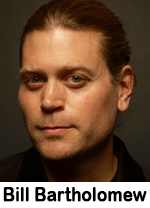 Folks in the Gen Z and millennial demographics are heavily engaged in political issues, care about news in their communities and the world, and are constantly bombarded with content. So why are they less likely to tune into and interact with news/talk radio than older demographics?
Folks in the Gen Z and millennial demographics are heavily engaged in political issues, care about news in their communities and the world, and are constantly bombarded with content. So why are they less likely to tune into and interact with news/talk radio than older demographics?
Talk radio has historically skewed older, and from an ad portfolio standpoint, is often targeted at the coveted 35-54 and 55+ demographics. However, in a world where social media influencers and podcasters supply information to millions of young consumers, news/talk radio should be able to effectively compete for the ears of younger generations in a comparable, if not expanded way.
For all of the anecdotal and hard evidence that terrestrial radio may be trending in a downward direction, the format continues to have a vast reach. It is convenient to engage with it in automobiles, and occasionally in home or office settings. Yet, while younger generations listen to radio, news/talk is not the format that they turn to by and large.
Unlike many digital-first content producers, radio retains a unique quality: authority. By virtue of editorial standards, FCC regulation and brand – things that social media and podcasts often lack – radio has the unique ability to deliver credible, vetted, nuanced and universally trustworthy content that can instantaneously adapt to meet the needs of the moment. This is true in everything from natural disasters to rapidly evolving breaking news stories, providing a channel for immediate, reactionary insight and analysis.
There are several steps that news/talk radio should pursue in earnest to adapt to the current climate of content consumption, particularly by younger listeners, that can reach, and most importantly, retain broader, younger, more diverse and more engaged audiences.
- Introduce younger people into the conversation.
Too often, Gen Z and millennials are skewered by older hosts, mocked for their perceived naivety, unchecked optimism and me-first approach. While some of these qualities can be accurate, that approach reflects a disconnect between older generations and the experience of younger ones. Millennials and Gen Z have grown up in a post-9/11 world replete with “endless wars”, the fallout from the 2008 financial crisis, runaway student debt, a massive housing crisis, the mental health stressors of social media, Covid19’s impact on traditional youth experiences, climate change, a deeply bifurcated political environment and a constantly evolving quest for social justice. Through these experiences, younger generations offer an important perspective that should be assigned the same news value as experts from older generations.
Are you discussing shifts towards electric vehicles? Bring on someone from Gen Z to share their perspective on why steps towards carbon neutrality are important to them. Engaging a conversation on the president’s approval rating? Perhaps younger conservative and leftist voices should be included in the conversation. Discussing immigration? How about the perspective of a younger member of a Latino organization?
By giving younger generations and more diverse guests a platform, stations can simultaneously expand their content and reach. With consistency, the station’s brand will become more familiar to younger potential listeners who may be inclined to tune in to hear someone who shares their identity and perspective on – here’s that word again – a platform of authority. Let the guest do the work of establishing the credibility and importance of your station or talk show to younger audiences by posting about their appearance on social media, sharing audio clips and mentioning to their peers. It will build familiarity and trust among those generations, who in turn, will begin to tune in on a more regular basis.
Stations should also consider bringing more younger, competent voices into on-air roles, whether that be through reporting, segments, fill-in hosts, weekend shows or full-time hosts.
- Meet the audience where they are: their phones.
As mentioned above, the convenience of simply turning on AM/FM radio is highly appealing in automobiles, though as Apple Carplay continues to adapt and evolve, digital-first content is likely to become as simple and convenient in the near future.
Talk radio needs to make consuming their product on smartphones as simple and direct as turning on a traditional radio. This means no clunky websites, no lengthy pre-roll spots, a reliable stream connection and a “one touch” means of turning on and off the station. This should also mean expanding talk shows to high-quality video livestreams, following in the footsteps of the top YouTube and Twitch performers; developing unique content for TikTok and Instagram; building podcasts that are focused on specific issues, and; providing interaction via text and chat.
Radio has the ability to be the ultimate livestreamer, social media influencer and podcaster, but rarely harnesses these platforms in a meaningful way.
It is not enough to simply strive to “expand a digital presence”; stations and shows must engage in the hard work of building platform-specific content with their brands.
- Music, cultural references and themes for the modern age.
A few weeks ago on a seemingly benign episode of the TV show FOX NFL Sunday, panelists Jimmy Johnson and Terry Bradshaw offered an example of the type of cultural adaptation that sophisticated writers and producers provide their brands. While describing a fight between two football players, Mr. Johnson said something to the effect of “when it comes to these two, what’s that Taylor Swift song?”, and then in synch with Mr. Bradshaw, “bad blood!”. It is highly unlikely that these two 70+ men listen to Taylor Swift’s music with any regularity or would simultaneously pull the “Bad Blood” reference. Yet, with excellent preparation that played into the greater cultural moment as well as the specific, current Taylor Swift/NFL overlap, in a six-second span, FOX NFL Sunday was able to give the illusion that their panelists are contemporary, hip and plugged into “what is going on”. Is your station or show plugged into what’s going on? Do you use contemporary music for bumps? Are your images – including headshots and social content – modern, interesting and engaging or are they more akin to a miscellaneous real estate agent? You are a performer in an entertainment business that, while certainly paying homage to the past and lineage of the industry, must be contemporary in aural and visual presentation. This goes for everything from wardrobe on video and in photo to fonts on graphic design.
How often do you or your producer read Pitchfork to learn about new music that is breaking this week? How often do you or your producer read Variety to understand major trends that are happening in the broader entertainment industry? What live events are you broadcasting from, covering and building partnerships with? You should strive to be cutting edge.
- We need a friend now more than ever.
This is something that goes for all audiences, but particularly for younger ones. It’s OK, in fact, great to be yourself, present yourself from your generation and retain the authoritative stance that has built your brand. Take a look at the success that sports talker Mike Francesa enjoyed by leaning into his persona – and in turn – developing legions of younger listeners that fell in love with his dad-like delivery and frequent meltdowns.
Few things are as uncomfortable to see as a 40+ person dressing or acting like a teenager. Younger listeners want that senior, experienced, trusted friend to entertain them, inform them, and at times, tell them that everything is going to be OK. You can help make sense of the world for younger audiences, something that is absolutely essential in the modern era.
Through attracting younger listeners by including them in the conversation, effectively delivering content on smartphones, presenting a cutting-edge entertainment product and continuing to serve as a trusted friend, news/talk radio can greatly expand its reach, relevance and revenue.
To that point, some younger listeners who discover a radio station or show via any of the above entry points will likely work backwards to the traditional AM/FM dial. Like the resurgence of vinyl records, AM radio in particular has the opportunity to become a hip delivery format for discerning younger listeners.
The big question is: are radio companies, stations and hosts prepared to do the hard work of reimaging their product?
Share this with your network
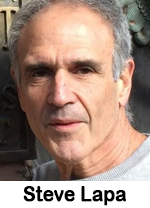 Let’s talk streaming because I don’t get what is happening. Maybe you do.
Let’s talk streaming because I don’t get what is happening. Maybe you do.


 the Annual Report alone, without also uploading it to its intended destination in a timely manner, here more than nine months late, may, in certain circumstances, constitute (and here does constitute) a violation of the requirements to analyze the Stations’ EEO program. The length of time during which Cumulus failed to upload its Annual Report is persuasive evidence that Cumulus did not ‘routinely analyze the adequacy of their various EEO program elements in achieving broad outreach to all segments of the community’ and address any problems found as a result of such analysis… Consequently, given the specific circumstances of this case, we reject Cumulus’s argument that any self-evaluation it did in fact undertake was adequate and satisfied the self-assessment rule.”
the Annual Report alone, without also uploading it to its intended destination in a timely manner, here more than nine months late, may, in certain circumstances, constitute (and here does constitute) a violation of the requirements to analyze the Stations’ EEO program. The length of time during which Cumulus failed to upload its Annual Report is persuasive evidence that Cumulus did not ‘routinely analyze the adequacy of their various EEO program elements in achieving broad outreach to all segments of the community’ and address any problems found as a result of such analysis… Consequently, given the specific circumstances of this case, we reject Cumulus’s argument that any self-evaluation it did in fact undertake was adequate and satisfied the self-assessment rule.” 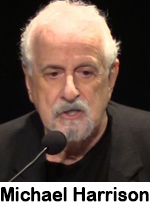 The United Nations and its specialized agency, the United Nations Educational, Scientific and Cultural Organization (UNESCO) have given the radio industry all around the globe an invaluable gift. It’s called “World Radio Day 2024.” Now in its 13th installment, WRD takes place annually on February 13 with the purpose of spotlighting the accomplishments, importance, and ongoing relevance of the radio medium as it evolves deeper into the 21st century. This year’s WRD theme is “Radio: A Century Informing, Educating and Entertaining.” By officially designating the platform as worthy of its own officially sanctioned UN International Day, the august world body has recognized, spotlighted, and endorsed radio’s continuing relevance and potential for being a vital force for the betterment of humanity.
The United Nations and its specialized agency, the United Nations Educational, Scientific and Cultural Organization (UNESCO) have given the radio industry all around the globe an invaluable gift. It’s called “World Radio Day 2024.” Now in its 13th installment, WRD takes place annually on February 13 with the purpose of spotlighting the accomplishments, importance, and ongoing relevance of the radio medium as it evolves deeper into the 21st century. This year’s WRD theme is “Radio: A Century Informing, Educating and Entertaining.” By officially designating the platform as worthy of its own officially sanctioned UN International Day, the august world body has recognized, spotlighted, and endorsed radio’s continuing relevance and potential for being a vital force for the betterment of humanity.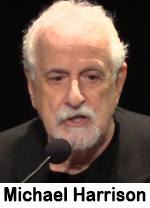 The United Nations and its specialized agency, the United Nations Educational, Scientific and Cultural Organization (UNESCO) have given the radio industry all around the globe an invaluable gift. It’s called “World Radio Day 2024.” Now in its 13th installment, WRD takes place annually on February 13 with the purpose of spotlighting the accomplishments, importance, and ongoing relevance of the radio medium as it evolves deeper into the 21st century. This year’s theme is “Radio: A Century Informing, Educating and Entertaining.” By officially designating the platform as worthy of its own officially sanctioned UN International Day, the august world body has recognized, spotlighted, and endorsed radio’s continuing relevance and potential for being a vital force for the betterment of humanity.
The United Nations and its specialized agency, the United Nations Educational, Scientific and Cultural Organization (UNESCO) have given the radio industry all around the globe an invaluable gift. It’s called “World Radio Day 2024.” Now in its 13th installment, WRD takes place annually on February 13 with the purpose of spotlighting the accomplishments, importance, and ongoing relevance of the radio medium as it evolves deeper into the 21st century. This year’s theme is “Radio: A Century Informing, Educating and Entertaining.” By officially designating the platform as worthy of its own officially sanctioned UN International Day, the august world body has recognized, spotlighted, and endorsed radio’s continuing relevance and potential for being a vital force for the betterment of humanity.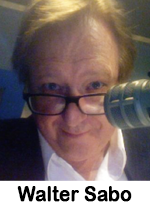 Research shows that readers to trade publications like articles with five bullet points. Here are my five bullet points for 2024. If these were to be deployed, you could be thriving by the end of the year. These actions would increase sales and audience share.
Research shows that readers to trade publications like articles with five bullet points. Here are my five bullet points for 2024. If these were to be deployed, you could be thriving by the end of the year. These actions would increase sales and audience share.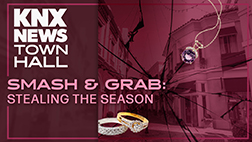 Season.” The station says it “featured an informative, spirited, and sometimes fiery debate about the growing problem of organized retail theft and what can be done about it.” Appearing on the panel of experts were Todd Spitzer, Orange County district attorney; Marc Beeart, director of fraud & corruption prosecutions at the L.A. County District Attorney’s office;
Season.” The station says it “featured an informative, spirited, and sometimes fiery debate about the growing problem of organized retail theft and what can be done about it.” Appearing on the panel of experts were Todd Spitzer, Orange County district attorney; Marc Beeart, director of fraud & corruption prosecutions at the L.A. County District Attorney’s office; 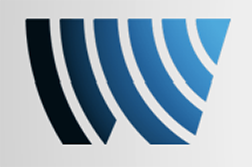 AM/FM radio listeners are 39% more likely to pay $301+ to have their taxes prepared and show greater familiarity, interest, consideration, and usage of tax category brands; 2) AM/FM radio ads drive site traffic for tax preparation brands: In the LeadsRx attribution study of a tax preparation service’s multi-wave campaign, AM/FM radio generated between a 43% to 47% increase in website traffic; 3) Branding early and often in tax preparation service ads drives more site traffic: LeadsRx found the top three creative executions that drove site traffic for a tax preparation service had the marketer’s brand name within the first five seconds of the ad; and 4) compared to other radio formats, a 2023 tax prep campaign on news/talk and sports stations realized a higher percentage share of interactions than the percentage share of their Nielsen ad impressions.
AM/FM radio listeners are 39% more likely to pay $301+ to have their taxes prepared and show greater familiarity, interest, consideration, and usage of tax category brands; 2) AM/FM radio ads drive site traffic for tax preparation brands: In the LeadsRx attribution study of a tax preparation service’s multi-wave campaign, AM/FM radio generated between a 43% to 47% increase in website traffic; 3) Branding early and often in tax preparation service ads drives more site traffic: LeadsRx found the top three creative executions that drove site traffic for a tax preparation service had the marketer’s brand name within the first five seconds of the ad; and 4) compared to other radio formats, a 2023 tax prep campaign on news/talk and sports stations realized a higher percentage share of interactions than the percentage share of their Nielsen ad impressions. 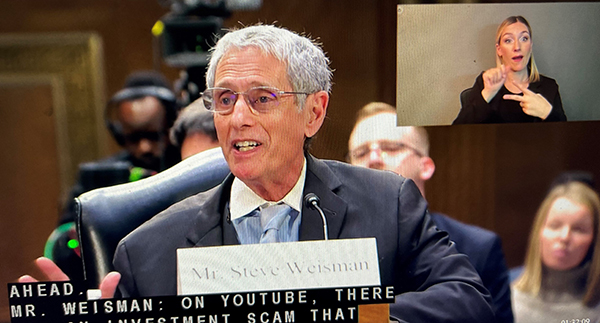
 Earlier this week, Michael Harrison published his top 10 list of suggestions for being a successful talker. Item number three really caught my eye:
Earlier this week, Michael Harrison published his top 10 list of suggestions for being a successful talker. Item number three really caught my eye: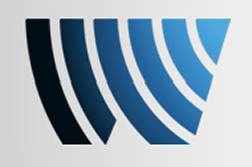 the study found that eliminating 10 words of audio copy increases the Creative Standout score by 1%. Creative Standout is achieved when consumers say, “this ad stands out” and rate an ad with an 8, 9, or 10 on a one-to-ten-standout scale. Further it found that eliminating 10 words of audio copy increases web traffic by 0.25%. Creative Standout in audio advertising is strongly linked to ad response via website visits. For each 1% rise in Creative Standout achieved by an audio ad, website response rate increases by 0.25%. Also, the more messages that are included in the ad, the poorer the recall. An ad with four messages will have message recall of only 24%, compared to 43% for ads with just one message. The more messages an ad attempts to communicate, the lower the likelihood of a single message being communicated.
the study found that eliminating 10 words of audio copy increases the Creative Standout score by 1%. Creative Standout is achieved when consumers say, “this ad stands out” and rate an ad with an 8, 9, or 10 on a one-to-ten-standout scale. Further it found that eliminating 10 words of audio copy increases web traffic by 0.25%. Creative Standout in audio advertising is strongly linked to ad response via website visits. For each 1% rise in Creative Standout achieved by an audio ad, website response rate increases by 0.25%. Also, the more messages that are included in the ad, the poorer the recall. An ad with four messages will have message recall of only 24%, compared to 43% for ads with just one message. The more messages an ad attempts to communicate, the lower the likelihood of a single message being communicated.  Folks in the Gen Z and millennial demographics are heavily
Folks in the Gen Z and millennial demographics are heavily 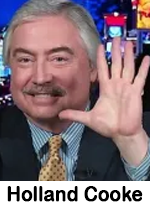 I am always impressed when I see-and-hear radio and TV stations swapping product.
I am always impressed when I see-and-hear radio and TV stations swapping product.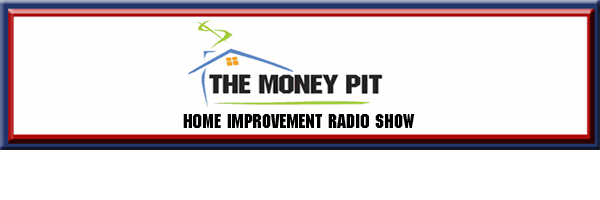
 ECHO box technology. He says, “GCN’s Adam Miller explains that their ECHO Files can easily be synced with most radio automation systems for easy delay broadcast with no new hardware needed and about fifteen minutes setup time! There is no need to have staff do daily chores like pulling files manually from an FTP or website. Those days are done! For live affiliates GCN has their ECHO Box that comes pre-programmed for the shows the affiliate carries. The ECHO Box can also do delay broadcast. They are sending these out with priority to stations that take the largest number of live hours, but eventually all live affiliates will receive them as dozens more of the very small ECHO Boxes will be coming in early November.” Affiliates with questions can call Adam Miller at 612-695-5982.
ECHO box technology. He says, “GCN’s Adam Miller explains that their ECHO Files can easily be synced with most radio automation systems for easy delay broadcast with no new hardware needed and about fifteen minutes setup time! There is no need to have staff do daily chores like pulling files manually from an FTP or website. Those days are done! For live affiliates GCN has their ECHO Box that comes pre-programmed for the shows the affiliate carries. The ECHO Box can also do delay broadcast. They are sending these out with priority to stations that take the largest number of live hours, but eventually all live affiliates will receive them as dozens more of the very small ECHO Boxes will be coming in early November.” Affiliates with questions can call Adam Miller at 612-695-5982. 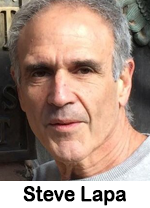 Ready to go back to the future?
Ready to go back to the future? audience. Salem Church Products creates and distributes resources for churches and ministries in the areas of church media, worship, children’s ministry, preaching, teaching and employment through online resources including WorshipHouse Media, SermonSearch, ChurchStaffing, Children’s Ministry Deals and many others. Salem COO David Evans says, “We are proud of the Church Products business we have built over the years. What started with a single website – SermonSearch – has grown into a successful organization providing valuable resources and services to local churches and their pastors. Any time we look to sell a business, we look for organizations that share our passion and that can take that business to the next level. Gloo is just such an organization and we couldn’t be more thrilled.”
audience. Salem Church Products creates and distributes resources for churches and ministries in the areas of church media, worship, children’s ministry, preaching, teaching and employment through online resources including WorshipHouse Media, SermonSearch, ChurchStaffing, Children’s Ministry Deals and many others. Salem COO David Evans says, “We are proud of the Church Products business we have built over the years. What started with a single website – SermonSearch – has grown into a successful organization providing valuable resources and services to local churches and their pastors. Any time we look to sell a business, we look for organizations that share our passion and that can take that business to the next level. Gloo is just such an organization and we couldn’t be more thrilled.”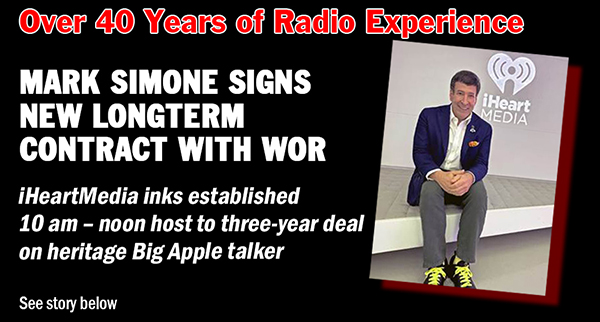
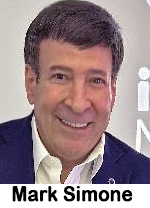 place to be in the radio world than iHeartRadio. Thanks to the finest broadcasting executives around, Tom Cuddy, Thea Mitchem and Bernie Weiss for making it all happen. Walking to work every day is like walking through the Radio Hall of Fame. Just to get to my studio, I pass Elvis Duran, Jim Kerr, Charlamagne tha God, Angela Yee and other all-stars.” WOR program director Tom Cuddy adds, “When I joined WOR almost 11 years ago, Mark was my first hire. Since then, it’s been a blast watching Mark grow into becoming the highest-rated radio talk host in his time slot, along with digital numbers that are among the highest in the country.”
place to be in the radio world than iHeartRadio. Thanks to the finest broadcasting executives around, Tom Cuddy, Thea Mitchem and Bernie Weiss for making it all happen. Walking to work every day is like walking through the Radio Hall of Fame. Just to get to my studio, I pass Elvis Duran, Jim Kerr, Charlamagne tha God, Angela Yee and other all-stars.” WOR program director Tom Cuddy adds, “When I joined WOR almost 11 years ago, Mark was my first hire. Since then, it’s been a blast watching Mark grow into becoming the highest-rated radio talk host in his time slot, along with digital numbers that are among the highest in the country.”